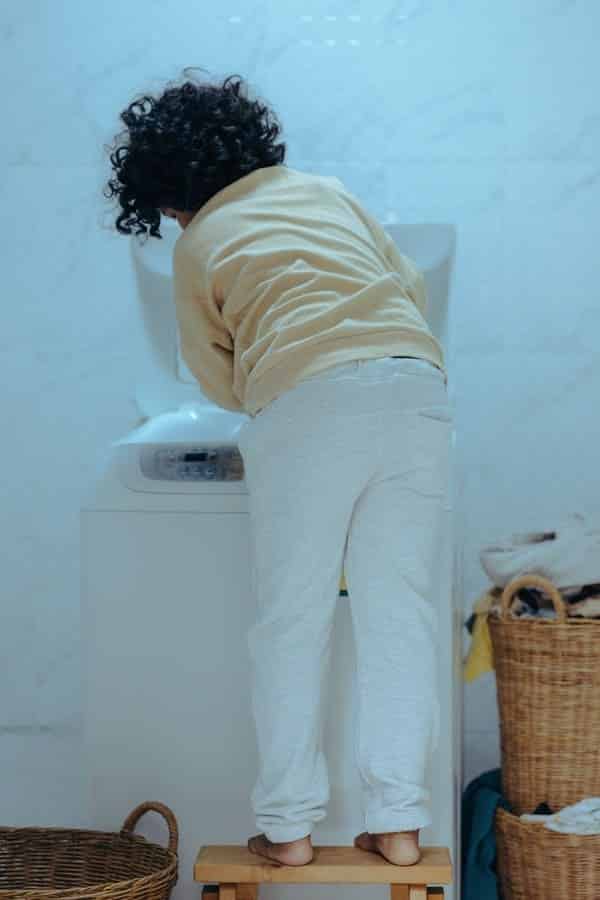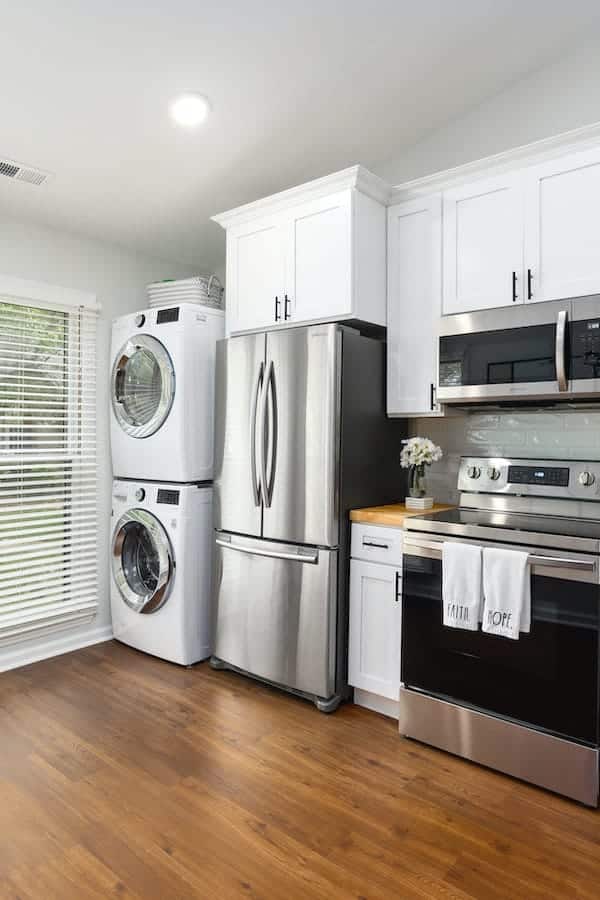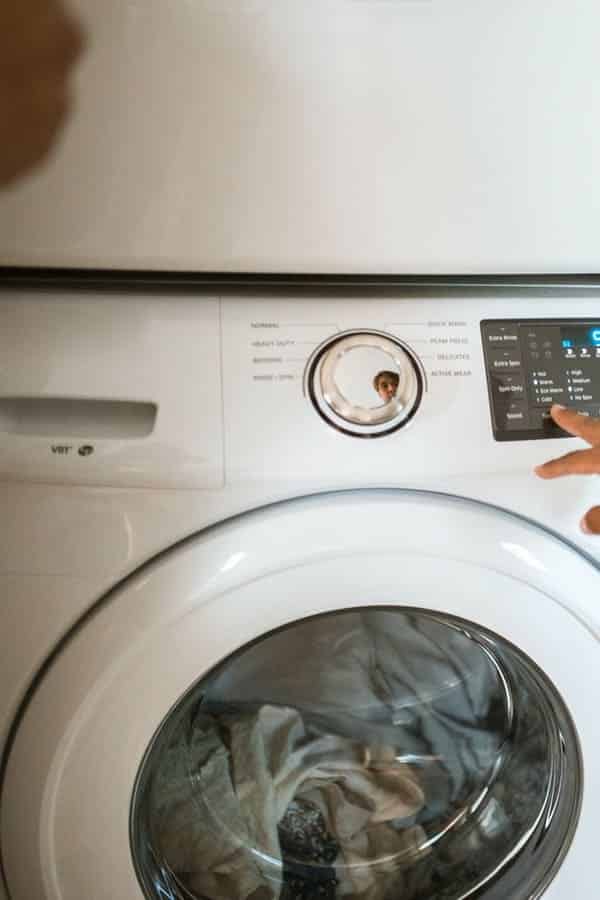Dryers see a lot of use without a lot of maintenance. You throw a load of sopping wet clothing or sheets in once every few days, close the door and let the machine get to work.
Occasionally, you may remember to empty the water reservoir or clean out the fluff, but that’s about the extent of it. So what happens when the dryer stops doing its job?
And what does it mean if the dryer is not heating up? Well, we’ve researched the common issues with Samsung dryers, so keep reading to find out.
There are many causes for a Samsung dryer to break and no longer heat. The reason may be minor, such as a clogged vent or lint filter.
Or perhaps the machine has been overloaded, preventing the thermostat from working correctly. However, it’s also possible that the heating element has broken or that the thermal cut-off fuse needs replacing, in which case, you will need to hire a professional.
There may be affiliate links in this article. You can read more about this in my disclosure.
Common Causes for Why Samsung Dryer Isn’t Heating.

1. Defective Heating Element
The most common reason your Samsung dryer isn’t heating anymore is that the heating element has burnt out. Although heating elements should last at least 15 years, they can occasionally become defective or break through excessive wear and tear.
The heating elements can break from overheating. For example, it can overheat if the dryer is not well-ventilated.
However, you can visually check whether the heating element is damaged or grounded. If this is the case, the elements will need to be replaced.
How to check the heating element:
- Unplug the dryer; if you have a gas dryer, turn off the gas.
- Locate the heating element following the manufacturer’s guidelines. On most Samsung models, the heating coils and element leads will be held by a mental frame.
- Inspect the element for damage, looking out for damaged coils.
- If possible, use a multimeter to test the heating element for continuity. If the element fails, it will need to be replaced.
You can hire a professional to service the machine and replace the heating element. Also, check that your dryer is under warranty, as Samsung may send someone out for you.
Alternatively, it isn’t that challenging to replace the heating element yourself. You can usually find replacement heating elements at a hardware store or buy one online using your dryer model number.
Once you have the part, unplug the dryer, remove the back panel and connections, and install the new heating element. Further instructions will be provided later.

2. Check the Air Vent Line
A dryer not heating adequately can result from a blocked air vent. The vent system is essential to ensure proper inflow and outflow of air.
The channels can become clogged from the accumulation of particles, or the dryer may not heat properly due to overfilling the dryer.
Unplug the air vent to check for clogged particles stuck inside to fix this. Next, wash the vent with warm, soapy water, and leave it to air dry before turning the machine on again.
While cleaning the vent, you might as well clean the lint filter to ensure the vent doesn’t get clogged again.
3. Check your Thermal Cut-Off Fuse
You may not have heard of a thermal cut-off fuse before, but it’s a vital piece of equipment that prevents the system from catching fire. The thermal cut-off fuse will blow and cut off the dryer if the machine exceeds a certain level.
If the fuse has blown, the machine will not work until replaced. To check the fuse, follow these steps:
- Unplug the dryer.
- Disassemble the top and side panels.
- Locate the fuse inside the blower housing.
- Use a multimeter to check the fuse.

4. Check the Voltage of the Samsung Dryer
A multimeter is your best friend when locating the dryer issue. If the dryer is not heating properly, the entire machine may not receive enough power.
A Samsung dryer requires two parts of 120V power, meaning they need 250 Volts. Faulty wires or issues with the electrical grid can result in dryers not receiving enough power.
5. Check the Igniter
If you have a gas-powered Samsung dryer, the igniter may have stopped working and thus won’t be lighting the gas. To check the igniter, press the power button and see if the igniter glows.
If it doesn’t, there is an issue with the igniter, and you will need to hire a professional to help.

6. Thermostat Issue
As you may have guessed, the thermostat regulates temperature. To check the thermostat, follow these steps:
- Unplug the dryer from the electrical source.
- Unassemble the top and side panels.
- Locate the thermostat.
- Use a multimeter to check the thermostat.
If the thermostat is broken, you may need to hire a professional to fix it.
7. Flame Sensor Issue
The flame sensor in Samsung dryers detects how hot the dryer is. If the sensor is broken, the dryer will not heat up.
To check the sensor, follow these steps:
- Unplug the dryer.
- Unassemble the top and side panels.
- Locate the sensor near the blower housing.
- Use a multimeter to check the sensor.
Why Does my Samsung Dryer Heating Element Keep Going Out?
If you’ve replaced the heating element, and it has gone out again, you might want to know why to prevent it from happening again. Unfortunately, many homeowners neglect to clean their dryer vents and filters regularly.
This leads to lint build-up and ultimately prevents air from flowing efficiently. This will cause the element to overheat and burn out.
Clean the filters and vents regularly, and do not overfill the machine when loading.
How Much Does it Cost to Replace the Heating Element?
Unfortunately, heating elements are costly. Typically, a Samsung dryer heating element can cost between $50 to $150, and a technician will charge around $120 to $200 to do the work.
If you can replace it yourself, you will save some money. However, you must know how to do it safely and correctly.
[amazon box=”B07YR8PVHF” template=”vertical”]How to Replace the Heating Element in a Samsung Dryer:
Slide the dryer away from the wall. Then, disconnect the machine from power, and disconnect the vent by loosening the band clamp on the vent hose with a screwdriver or drill.
Remove two screws on the top cover, slide the top cover off, and place it to one side. Remove the top cover from the control panel, remove the two guide screws, and then pull the six slips from the guide panel.
Disconnect the two wires connecting the panel to the dryer, remove the front knob, and place the panel off to the side. Next, remove the six heater terminals from the heating element.
Remove the mounting screw from the back of the heating element, and pull the element out of the drum. Then, remove the four screws holding the thermostat into the element.
Secure the thermostat to the new heating element. Slide the heating element into the drum and secure it with one screw.
Place the front plate back onto the dryer, secure it to the panel, and drum with the screws. Reconnect the control unit’s electrical cables, and snap the control unit back into place with the clips.
Secure the unit with the fasteners and side the knob back into place. Place the top cover onto the dryer and secure it with screws.
Finally, reconnect the dryer vent, plug the dryer back in, and slide the dryer back against the wall. You can also follow an instructional youtube video to help visualize the process.

To Summarize
A faulty dryer is a useless dryer. Hopefully, the machine is under warranty, and you can get a professional to come and fix it for free.
Otherwise, you should follow the methods outlined to check the issue yourself. For example, the dryer may have stopped heating for several reasons, such as a broken heating element, faulty thermostat, or clogged vent.
Use a multimeter to check the problem, and hopefully, you can fix it yourself.



